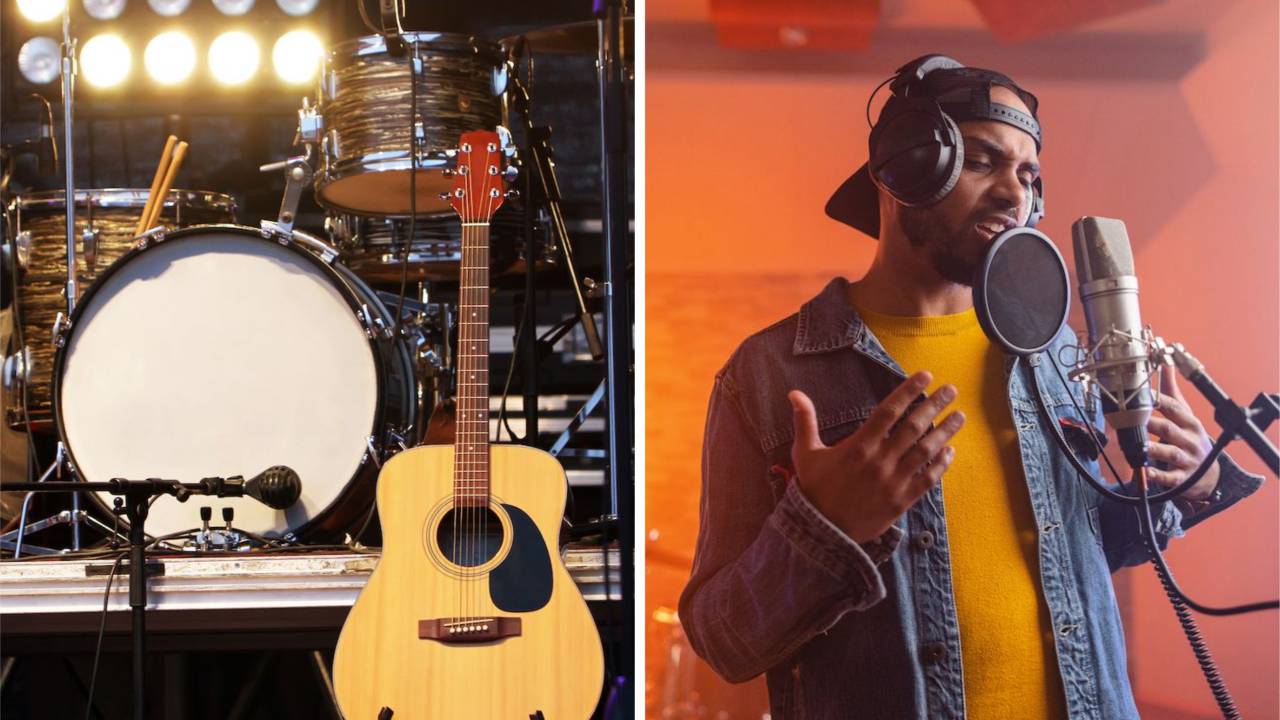
Choosing the right microphone can feel overwhelming in a crowded market where each product competes for attention. Each microphone serves a unique purpose, capturing specific frequency ranges and employing precise polar patterns.
Your choice will greatly impact the recording quality. Some microphones highlight brighter frequencies, while others favour darker tones. Some excel at capturing close-range detail, while others capture a broader spectrum with less granularity.
Even within the same style, there are variations tailored for different applications like vocals or instruments. Understanding these nuances is essential for making informed decisions that match your recording requirements, whether you’re a singer recording their first demo, or a drummer looking to get the best snare sound possible. Here we’re going to look in closer detail, to help you find the right mics for your needs.
Dynamic or condenser?
Microphones typically fall into two styles: dynamic and condenser. Dynamic microphones are ideal for live settings, and are equipped with passive components like a diaphragm, voice coil and magnet to handle high-volume environments while minimising background noise.
Condenser micropones utilise phantom power to charge a sensitive diaphragm and backplate capacitor, offering a wider frequency response and natural sound, perfect for studio use with proper room treatment. However, they require careful handling to avoid overloading the backplate capsule. Ultimately, the choice between dynamic and condenser mic depends on the audio source, environment and desired sound quality.
Jack of all trades and a master of none
Top-tier condenser microphones like the Neumann U87 and AKG 414 offer versatility, while reliable dynamic options such as the Shure SM58 provide durability, affordability and reliability. However, it's essential to recognise that each microphone is designed for specific applications and sound characteristics. Understanding factors like frequency response, sensitivity to handling and environmental noise, and polar pattern is crucial when considering adding a microphone to your collection.
For first-time buyers, opting for a versatile microphone that can cover multiple applications can be a wise choice. However, as you expand your collection, investing in microphones tailored to specific instruments and environments becomes advantageous. While using the same microphone across various sources might seem convenient, the results can vary significantly.
Want all the hottest music and gear news, reviews, deals, features and more, direct to your inbox? Sign up here.

Vocal vs instrument microphones
When it comes to selecting the ideal vocal microphone, manufacturers often provide a dedicated vocal variant alongside the instrument version, such as the sE V7 and V7X. This distinction recognises the unique tone, dynamics, and range of sounds produced by the human voice, which can significantly differ from specific instruments.
For instance, a vocal microphone might focus on a narrow frequency range, such as 3000Hz to 8000Hz, to capture the sibilant frequencies and harmonics inherent in the vocal range. Conversely, an instrument microphone like the Electro-Voice RE-20 is designed with a tight low-end response tailored specifically for bass amps and kick drums.
Voices vary in shape, size, and tonality, each possessing its own unique range and timbre. Therefore, what works well for one individual may not necessarily be the best fit for another.
Noise rejection
Microphone selection is heavily influenced by whether it will be used for live or studio purposes. In live performances, dynamic vocal microphones are preferred for their superior noise rejection capabilities. Vocal performances are often dynamic, with performers moving around and directing air towards the microphone diaphragm. To counteract unwanted noise from microphone stand knocks, handling, wind noise and plosives, vocal microphones typically incorporate a rolled-off low end with a high-pass filter.
Dynamic microphones like the Shure SM58 are favoured for live vocals due to their minimal handling noise and consistent noise capture. Their tight polar pattern and off-axis noise rejection help minimise bleed and focus on specific areas of an instrument, making them well-suited for particular applications.
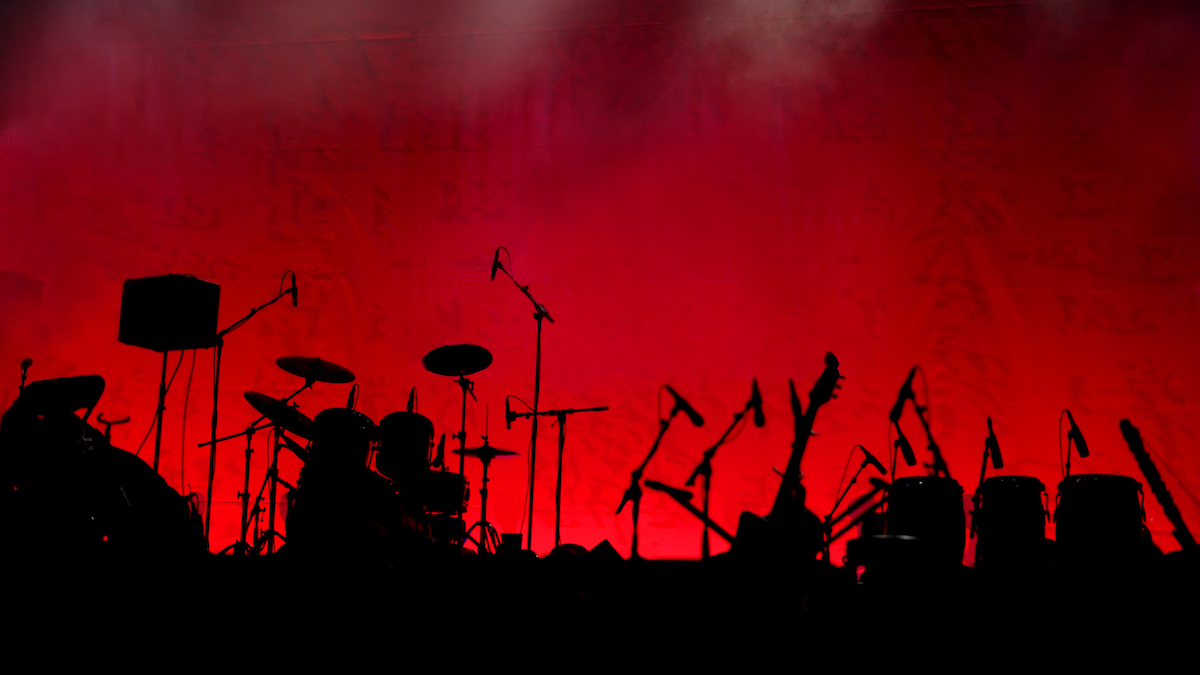
Recording instruments
Instrument microphones, whether dynamic or condenser, are valued for their ability to capture a wide range of sound. However, they can be sensitive to loud knocks, bangs, and wind noise due to their lack of low-end filtering. Opting for a dynamic instrument microphone will reduce bleed, but it remains susceptible to such disturbances.
In studio environments, condenser microphones typically shine. Close-miking with condenser mics allows for capturing subtle nuances like finger movements on a fingerboard and dynamic inflections. Microphones with broader polar patterns are often used as overheads to capture the full sound of a drum kit from above or to record a group of orchestral players.
Capturing vocals
Condenser vocal microphones are engineered to function within an ideal frequency range to capture both male and female vocal ranges effectively. Female voices typically range from 350Hz to 17kHz, whereas male voices generally fall between 100Hz and 8kHz. While the primary aim of vocal microphones is to capture the fundamental tones and harmonics of both voice types, it's advisable to research which microphone will yield the best results for your specific voice.
Accentuating harshness
Using a vocal microphone on instruments like guitars, violins or violas, which have harsh harmonics within the vocal range, can result in an unpleasant sound, as it accentuates these harmonics. When recording such instruments, selecting a microphone that focuses on the instrument's fundamental frequency rather than its harmonics can help mitigate this issue. By doing so, you'll reduce the prominence of harsh harmonics, requiring less EQ adjustment later on. This approach allows you to preserve the instrument's natural sound without excessive processing.
Clip on for precision
Instrument microphones are often crafted in unique sizes and shapes to accommodate various applications, such as fitting into bass drums or clipping onto specific areas of instruments. This design allows them to focus on precise close-mic areas and keeps mic stands out of the performer's way, enabling them to feel comfortable, deliver their best performance, and move around freely during performances. This style of mic is commonly used for instruments like woodwinds, brass, strings and percussion.
Our recommendations
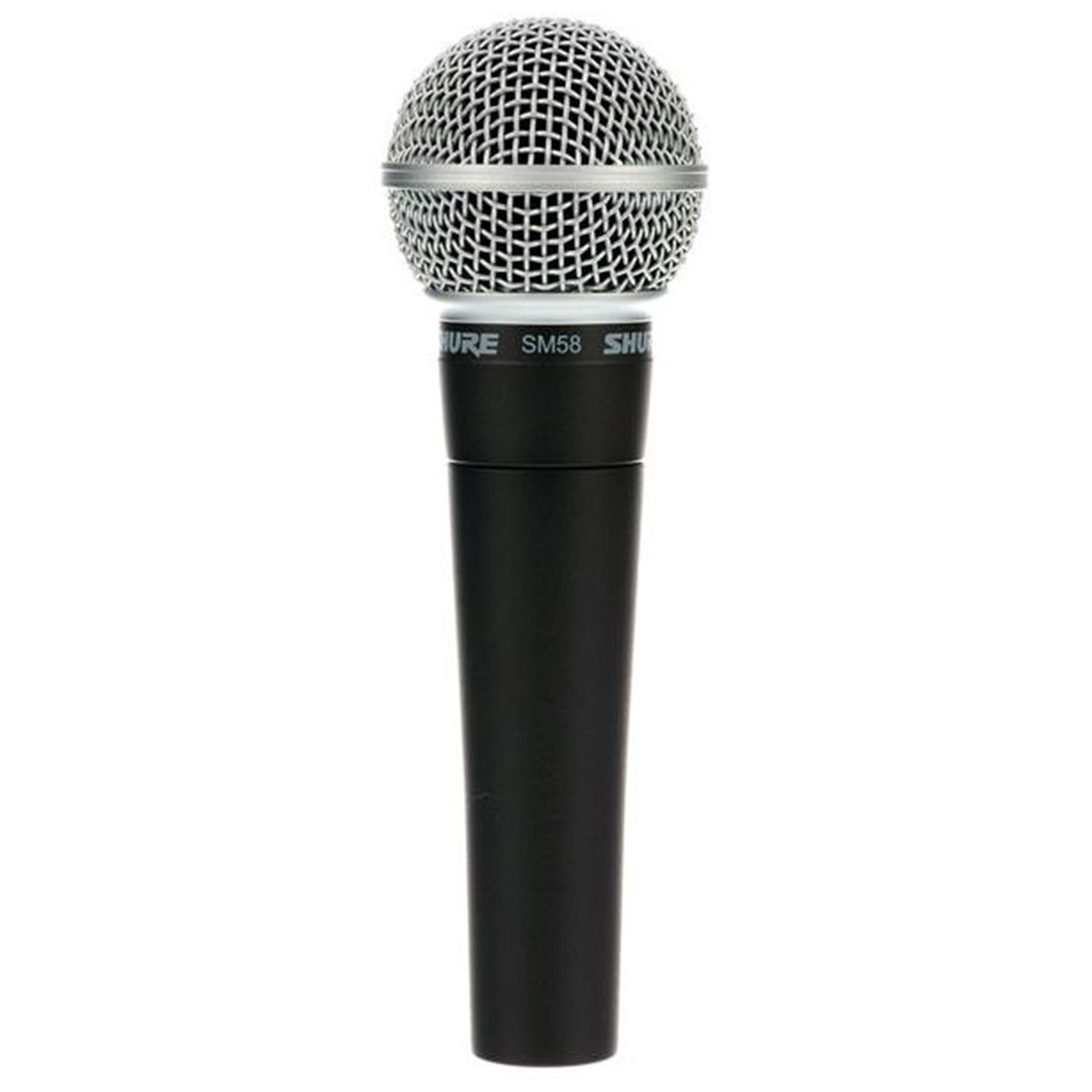
The SM58, a trusted favourite, delivers warm, clear vocals with optimised frequency response. Equipped with a low-pass filter to minimise breathing and wind noise, it also features a built-in shock-absorbing system for enhanced durability. Read our full review.
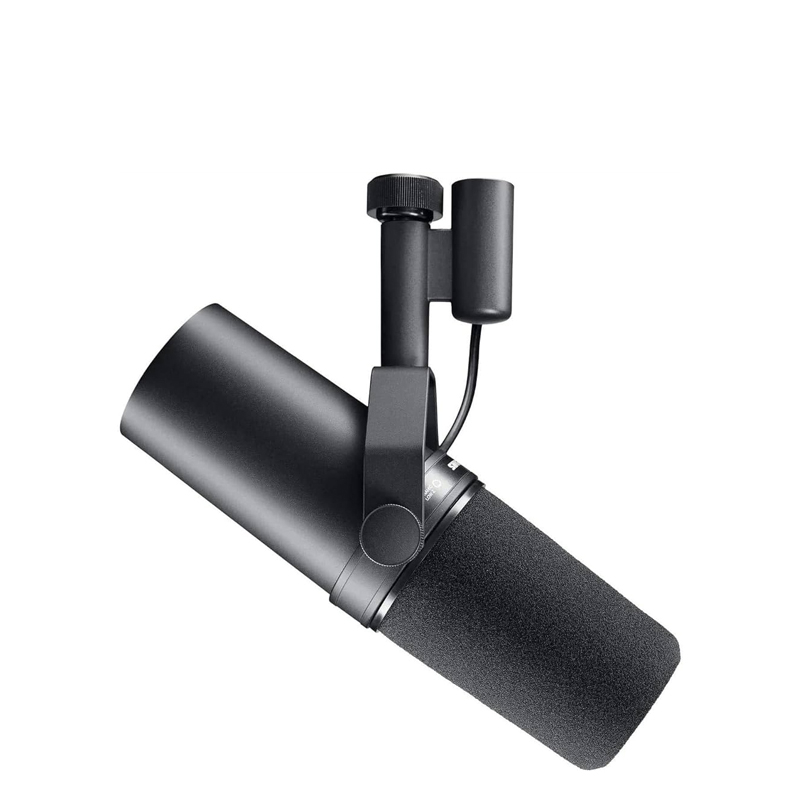
The SM7B offers dynamic, controlled performances for vocals or podcasting. Pair with preamps or a Cloudlifter for optimal signal levels, ensuring the signal’s warmth and clarity. It's pronounced midrange suits aggressive rock vocals perfectly. Read our full review.
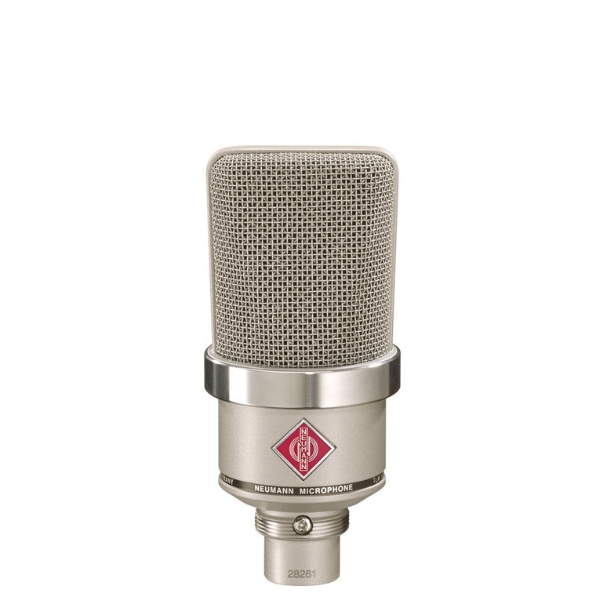
This large-diaphragm condenser microphone offers Neumann-quality sound at an affordable price. With an expansive frequency response from 20Hz to 20kHz, it captures vocal performances with exceptional detail, accentuating clarity and presence with a boost around 6kHz. Read our full review.
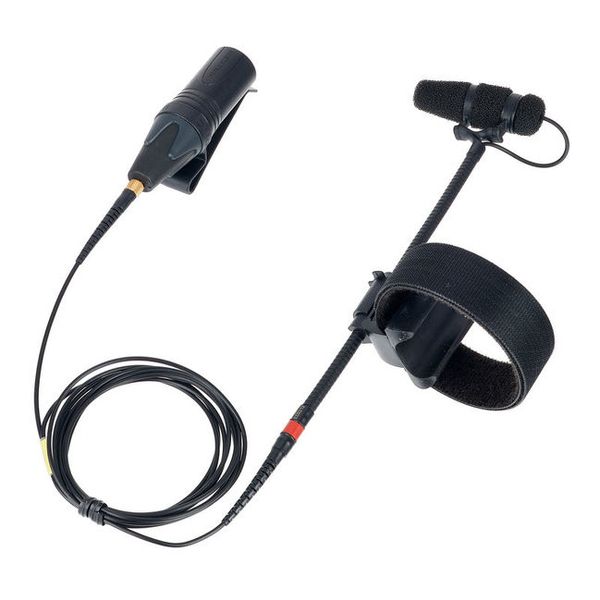
The DPA Core 4099 is a crystal clean and versatile microphone, clipping onto anything from rack toms to woodwind instruments. Ideal for precise close-mic accuracy but also excelling at capturing loud environmental spatial sounds.

Recording instruments in stereo mirrors human ear perception, capturing nuances like fingerboard details on the left and resonant soundhole on the right of an acoustic guitar. Matched stereo pairs like Lewitt's excel in capturing a naturally panned signal.

Renowned in broadcast and vocal applications, the RE20 dynamic microphone excels in capturing low-end frequencies. Producers favour it for its Variable-D technology, which reduces bass proximity effect, ensuring clarity even at high volumes from bass cabinets or kick drums.
Joe is a freelance writer, musician and producer working on music as a member of grunge band IOTA while exploring electronic music under the pseudonym Malaurora. His interest in production and musical sound design has led him into specialized music software marketing, conducting interviews with film composers, crafting blog content for electronic music outlets and developers such as Slate + Ash and engineering live recording and video sessions.
